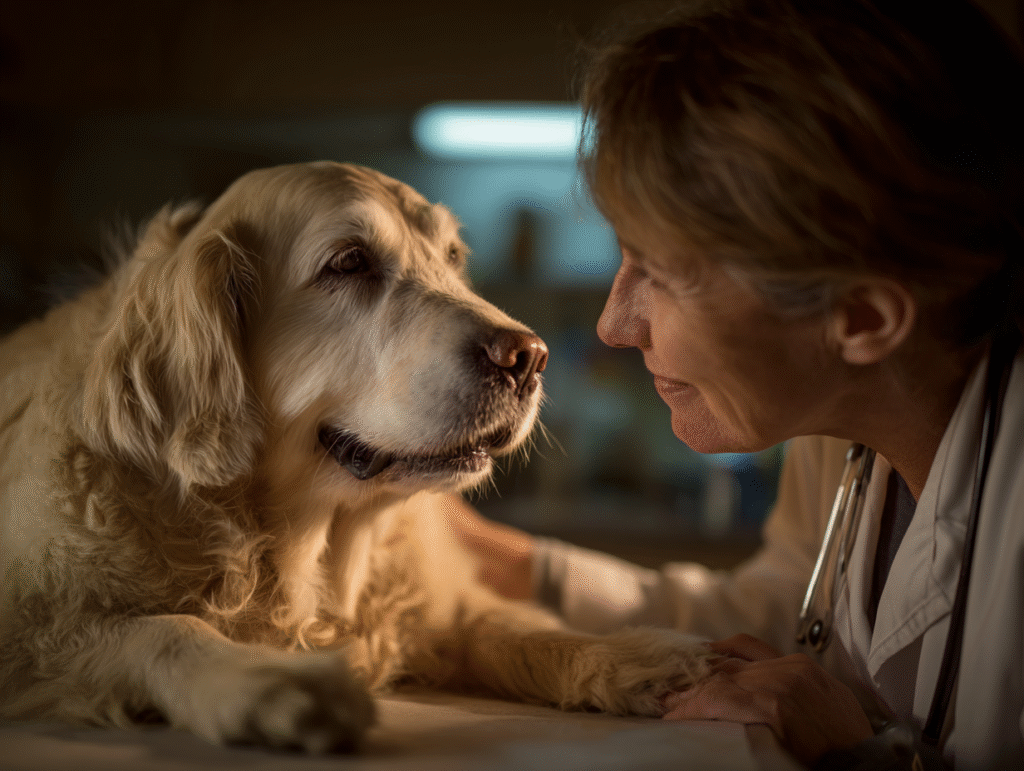Understanding Pancreatic Cancer in Dogs: Symptoms, Diagnosis, and Support
Receiving a diagnosis of pancreatic cancer in dogs is a deeply concerning moment for any pet owner. This guide aims to provide clarity on this aggressive disease, including the most common symptoms of pancreatic cancer in dogs and what happens during the end stage pancreatic cancer in dogs. We will also explore the challenging prognosis, discussing the canine adenocarcinoma life expectancy without treatment. Ultimately, understanding the nuances of cancer of the pancreas in dogs is the first step toward making informed decisions for your beloved companion.
Table of Contents
- What is Pancreatic Cancer in Dogs?
- Recognizing the Key Symptoms of Pancreatic Cancer in Dogs
- Diagnosis and the Canine Adenocarcinoma Life Expectancy Without Treatment
- Exploring Complementary Support with Vitaplus (Vidatox)
- Managing End Stage Pancreatic Cancer in Dogs
- Frequently Asked Questions About Pancreatic Cancer in Dogs
What is Pancreatic Cancer in Dogs?
The pancreas is a crucial organ situated in your dog’s abdomen, near the stomach and small intestine.
Critically, it has two primary jobs: producing hormones like insulin and secreting digestive enzymes essential for breaking down food.
A particularly aggressive form of cancer of the pancreas in dogs is known as pancreatic adenocarcinoma.
This type of cancer develops in the glandular cells responsible for producing those digestive enzymes.
Unfortunately, pancreatic cancer in dogs is known for its rapid progression and high rate of metastasis, which means it spreads quickly to other parts of the body.
Common sites for this spread include the liver, spleen, lymph nodes, and even the brain or bones, which complicates the outlook for this form of cancer of the pancreas in dogs.

Recognizing the Key Symptoms of Pancreatic Cancer in Dogs
The initial signs of this disease can be frustratingly vague, often mimicking general stomach upset.
Therefore, recognizing the common symptoms of pancreatic cancer in dogs is vital for early detection.
These symptoms of pancreatic cancer in dogs can include:
- Vomiting or persistent diarrhea.
- A noticeable decrease in appetite and subsequent weight loss.
- Clear signs of abdominal pain or discomfort.
- Lethargy or a general lack of energy.
In some cases, a tumor can grow large enough to obstruct the common bile duct. This vital channel carries bile from the liver to the intestines.
If a blockage occurs, it can lead to jaundice, which is a yellowing of the skin, gums, and whites of the eyes. This is one of the more specific symptoms of pancreatic cancer in dogs.
Furthermore, as the cancer of the pancreas in dogs spreads, new symptoms will appear related to the affected organs, such as breathing difficulties or bone pain.
Diagnosis and the Canine Adenocarcinoma Life Expectancy Without Treatment
A definitive diagnosis of pancreatic cancer in dogs requires a multi-step approach from your veterinarian.
The process often begins with blood work, which may reveal anomalies in liver or kidney function, elevated white blood cell counts, or anemia.
Following this, your veterinarian will likely recommend imaging tests. These can include X-rays, an abdominal ultrasound, or a CT scan to visualize the pancreas and look for a mass.
If a tumor is found, the final step is to confirm if it is cancerous. This is done through a biopsy (taking a small tissue sample) or cytology (analyzing cells collected with a fine needle).
Sadly, due to the aggressive nature of the disease and its often-late diagnosis, the canine adenocarcinoma life expectancy without treatment is extremely short.
The prognosis is often measured in days or weeks, making immediate consultation with your vet paramount. The limited canine adenocarcinoma life expectancy without treatment underscores the severity of this diagnosis.

Exploring Complementary Support with Vitaplus (Vidatox)
When facing a difficult diagnosis like pancreatic cancer in dogs, many owners seek supportive therapies that can improve their dog’s quality of life alongside conventional veterinary care.
One such option gaining attention is Vitaplus (Vidatox), a natural remedy derived from the venom of the blue scorpion.
While not a cure, Vitaplus (Vidatox) offers several potential benefits that can address the painful and debilitating effects of this disease.
A primary benefit of Vitaplus (Vidatox) is its powerful anti-inflammatory properties.
Cancerous growths, including pancreatic cancer in dogs, create significant inflammation, which is a major source of pain and discomfort for the animal.
By helping to reduce this inflammation, Vitaplus (Vidatox) can lead to a noticeable improvement in a dog’s comfort and mobility.
This makes it a valuable tool for pain management, allowing pets to maintain a better quality of life during their treatment journey.
Furthermore, research into the active components of Vitaplus (Vidatox) suggests it may have anti-tumor effects.
Some studies indicate that the peptides in the venom can potentially inhibit the growth of new blood vessels that tumors need to survive and spread, a process known as anti-angiogenesis.
They may also induce apoptosis, or programmed cell death, in cancerous cells.
This potential to slow tumor progression makes Vitaplus (Vidatox) a compelling supportive therapy to discuss with your veterinarian.
Ultimately, managing the severe pain associated with pancreatic cancer in dogs is a top priority. Vitaplus (Vidatox) provides a natural analgesic (pain-relieving) effect without the side effects associated with some traditional pain medications.
By integrating Vitaplus (Vidatox) into a comprehensive care plan, owners may help their dogs experience less pain and more comfort.
It is essential to remember that Vitaplus (Vidatox) should be used as a complementary therapy and always under the guidance of a qualified veterinarian.

Managing End Stage Pancreatic Cancer in Dogs
When the disease progresses to its final stages, the focus of care shifts entirely to comfort and quality of life.
Managing end stage pancreatic cancer in dogs is about providing palliative care to keep your companion as pain-free and comfortable as possible.
Unfortunately, conventional treatments like surgery or chemotherapy are rarely effective for this type of cancer because it has almost always metastasized by the time of diagnosis.
Your veterinarian will work with you to create a management plan. This plan for end stage pancreatic cancer in dogsmay include powerful pain medications, anti-nausea drugs, and appetite stimulants.
The emotional toll of witnessing end stage pancreatic cancer in dogs is immense. It is a time for providing love, familiar comforts, and gentle care.
Ultimately, the most compassionate choice may be humane euthanasia when their quality of life declines significantly. This is a deeply personal decision made with the guidance of your trusted vet.

Frequently Asked Questions About Pancreatic Cancer in Dogs
What are the very first signs of pancreatic cancer in dogs? The earliest signs are often subtle and non-specific, such as a decreased appetite, lethargy, occasional vomiting, or diarrhea. Because these symptoms mimic many other conditions, a veterinary check-up is crucial if they persist.
Why is the prognosis for cancer of the pancreas in dogs so poor? The prognosis is poor for two main reasons: the cancer is extremely aggressive, and it is usually diagnosed very late. By the time clear symptoms appear, the cancer has often already spread to other organs (metastasized), making treatment ineffective.
Is there a cure for pancreatic cancer in dogs? Currently, there is no reliable cure. Surgery is rarely an option due to metastasis, and this type of cancer has not shown a positive response to chemotherapy. The focus is almost always on supportive and palliative care to maintain quality of life.
What exactly is Vitaplus (Vidatox) and how does it help? Vitaplus (Vidatox) is a natural remedy derived from blue scorpion venom. It is used as a complementary therapy to help manage symptoms by providing anti-inflammatory and pain-relieving effects. It may also have properties that can help slow tumor growth, but it should always be used under veterinary supervision.




